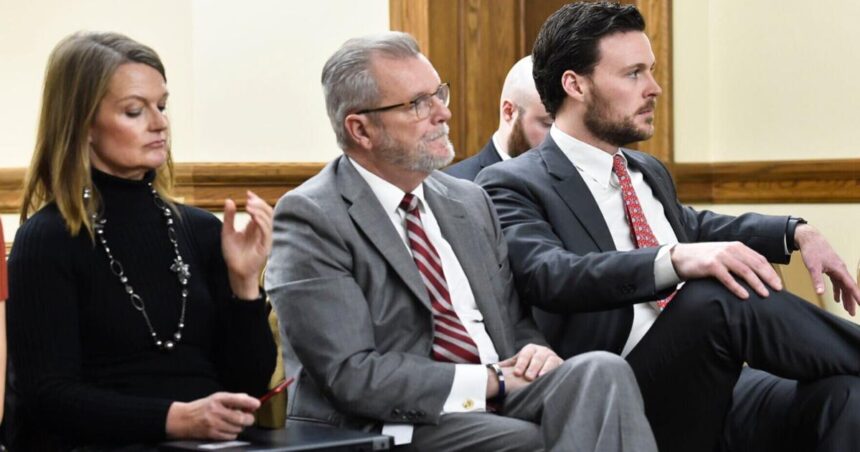More people were disenrolled from Medicaid during the unwinding process in Montana than the state expected, according to a report released by the health department on Monday tallying the impact of redetermination, which concluded in March.
About 4% more people no longer receive Medicaid coverage than the health agency projected prior to unwinding beginning, the report found. The greatest gap between reality and expectation is among the Medicaid expansion population, or adults eligible for coverage based on low incomes.
Over 6% more enrollees under expansion lost coverage than the Department of Public Health and Human Services anticipated. These numbers do not account for potential “bounce back” applications for anyone who might have lost coverage but later reapplies and is determined eligible, the report notes.
People are also reading…
Using data as of June 27, the final closeout report contains the most current and accurate information, DPHHS says. According to final agency data, 115,302 people were disenrolled through the unwinding process, less than previously reported. That’s because the report captures outcomes for most once-pending cases, which closes the gap slightly, according to the department. Information from DPHHS shows that over 60% of people who lost Medicaid coverage did so because of paperwork errors and failure to submit all the necessary information.
Total Medicaid, which includes individuals subject to redetermination as well as people who receive coverage through a separate “ex parte” process including those who receive Supplemental Security Income program, are in foster care or are covered due to pregnancy, is slightly below what it was before the COVID-19 pandemic. According to the DPHHS Medicaid Enrollment dashboard, there are 217,840 people covered by the joint federal-state insurance program, out of the state’s population of about 1.1 million. That’s 85,000 fewer people on the rolls since just a year prior, making up for some of the losses of redetermination.
Officials conceded at a gathering of lawmakers in Helena in June there’s been some confusion with the data and its presentation to the public. DPHHS makes data available online in various dashboards. One is focused on redetermination, another for total Medicaid enrollment. The two shouldn’t be compared because they capture two different populations, the agency clarified. While the redetermination dashboard will remain largely static moving forward, the total enrollment count will continue to be dynamic as normal, pre-pandemic Medicaid processes have now gone into effect.
No matter how the data is sliced, fewer people are covered by Medicaid today than one year ago. And that number is smaller than DPHHS expected.
Medicaid redetermination, explained
Redetermination isn’t novel. For years, Montana has required Medicaid enrollees to resubmit proof of eligibility on an annual basis.
DPHHS first tries to determine if a client can be automatically enrolled in Medicaid based on participation in other government programs such as SSI or pregnancy. If the state can’t determine automatic renewal, DPHHS sends a packet of paperwork to the client, who has until the final day of the following month to submit the necessary information. DPHHS then evaluates eligibility.
But during the pandemic, the federal government required states to waive typical redetermination processes. Everyone was automatically re-enrolled, even if their circumstances changed in a way that would otherwise make them ineligible for Medicaid coverage.
All states were required to undergo an unwinding period after the public health emergency ended, and droves of people lost coverage all over the country. But Montana’s performance was one of the worst in the nation by some metrics.
Operational issues plagued redetermination, especially in the early days. An August 2023 letter from the Centers for Medicare and Medicaid Services to DPHHS cited a call abandonment rate of about 40% and an average call center wait time of 42 minutes for individuals calling about their coverage as “impeding equitable access to assistance.” It also suggested potential “non-compliance with federal requirements.”
A greater percentage of kids in Montana lost coverage than any other state. Seniors who use Medicaid to pay for skilled nursing or residential centers have racked up steep out-of-pocket bills just so they can stay. Health care facilities have accumulated tens of thousands of dollars of debt waiting for Medicaid reimbursement for patients experiencing lapses in their insurance coverage.
People turning 19, transitioning under the state’s definition from a child to an adult, were some of the most at risk of losing coverage. Children can enroll in Medicaid under a higher income than adults. Over 70% of 19-year-olds previously covered lost Medicaid during unwinding.
The state said this is “to be expected” at a higher percentage than other age groups.
Nevertheless, the state stands by its process.
“Despite CMS requiring many states to pause their unwinding activities due to concerns with approach and redetermination processing accuracy, Montana was not required to adjust or stop the redetermination process at any point during the unwinding period,” according to the report.
It touted health agency efforts to host webinars for community partners, provide website updates and reach out to people through phone, email, and text messages. But many health care providers told the Montana State News Bureau over the past year that patients they serve didn’t feel equipped to navigate the process and, in some cases, didn’t even receive their paperwork in the mail.
DPHHS set a 10-month time frame for unwinding, a faster timeline than what was required by the federal government. It started with the people it thought were most likely to no longer be eligible for insurance coverage, the Medicaid expansion population. These are adults aged 19- to 64-years-old who make up to 138% of the federal poverty line, a monthly income under $2,86 for a family of three.
There were fewer auto-renewals for this group, so the number of disenrollments was at highest at the beginning of the unwinding process. Disenrollments decreased and auto-renewals went up as DPHHS shifted its focus to the traditional Medicaid group, which includes children, adults with disabilities, and seniors.
Montana first passed Medicaid expansion under the Affordable Care Act in 2015. It was renewed in 2019 and will be up for its second extension in the next legislative session.
All told, DPHHS reviewed about 300,000 applications for redetermination. Ultimately, 41% of individuals who had been covered going into the unwinding period lost Medicaid coverage for some period. A portion of those enrollees have since reapplied and been deemed eligible or have received retroactive coverage.
More adults were up for redetermination than children. Of kids with any Tribal affiliation, 32% were disenrolled, according to the report.
Looking ahead
Charlie Brereton, head of DPHHS, said the agency has no plans for future outreach campaigns targeted at those who have been disenrolled.
“There are a number of coverage campaigns by the federal health department that I expect will continue even after states move through the unwinding period,” he told lawmakers.
Legislative staffers told lawmakers at an interim budget committee meeting in June that the decline in Medicaid enrollment would lead to a $203 million budget surplus, most of which would go back to the federal government since it funds much of Medicaid. About $40 million would go back to the state. Some want the surplus to be used to improve how Medicaid is administered in Montana.
Both in the report and in conversations with legislators in June, DPHHS acknowledged some areas where it can improve its redetermination process going forward.
Over five dozen service providers sent a letter to the governor’s office for sizable investments into the health agency to improve the administration of public benefits. Brereton said DPHHS is bringing proposals as part of the budget planning process.
The report noted that long wait times on the telephone help line “highlighted long-standing challenges with the system that predated the Gianforte administration.”
In the report, DPHHS said it will work to make redetermination moving forward smoother for all Medicaid enrollees.
Ideas the agency will consider include online portals that are easy to use, increased staffing in certain sites, the possibility of permitting authorized representatives to help with paperwork, and improved training for more complicated cases.
Carly Graf is the State Bureau health care reporter for Lee Montana.





